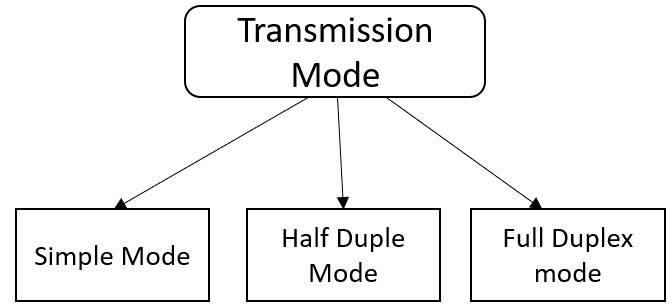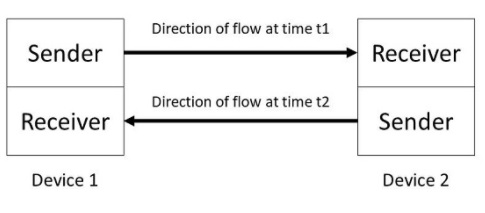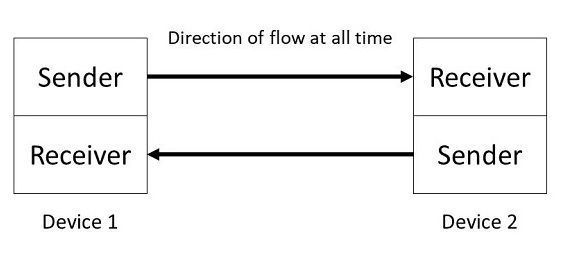
 Data Structure
Data Structure Networking
Networking RDBMS
RDBMS Operating System
Operating System Java
Java MS Excel
MS Excel iOS
iOS HTML
HTML CSS
CSS Android
Android Python
Python C Programming
C Programming C++
C++ C#
C# MongoDB
MongoDB MySQL
MySQL Javascript
Javascript PHP
PHP
- Selected Reading
- UPSC IAS Exams Notes
- Developer's Best Practices
- Questions and Answers
- Effective Resume Writing
- HR Interview Questions
- Computer Glossary
- Who is Who
What is Half Duplex mode? Differentiate between half duplex and full duplex?
When a data is transmitted from one device to another device is known as transmission mode, it is also known as the communication mode.
Generally, the communication channel is a direction associated, and transmission media role is to provide the direction. So, we call transmission mode a directional mode.
The transmission mode is work in the physical layer.
Types of Transmission mode
The Transmission mode is divided into three categories, which are as follows −
- Simplex Mode
- Half-duplex Mode
- Full-duplex mode (Duplex Mode)
The types of transmission mode are shown in the chart below −

Let us see the half duplex mode of transmission.
Half duplex mode
In a Half-duplex channel, direction can be reversed, i.e., the station can transmit and receive the data as well. Messages flow in both directions, but not at the same time.
The entire bandwidth of the communication channel is utilized in one direction at a time.
In half-duplex mode, it is possible to perform the error detection, and if any error occurs, then the receiver requests the sender to retransmit the data.
A Walkie-talkie is an example of the Half-duplex mode. In Walkie-talkie, one party speaks, and another party listens. After a pause, the other speaks and the first party listens. Speaking simultaneously will create a distorted sound which cannot be understood.
Example
Wireless microphones as only one user can provide information in a particular piece of time. Given below is the diagram of half duplex mode −

The advantage of half-duplex mode is that in half-duplex mode, both the devices can send and receive the data and also can utilise the entire bandwidth of the communication channel during the transmission of data.
The disadvantage of half-duplex mode is that in half-duplex mode, when one device is sending the data, then another has to wait, this causes the delay in sending the data at the right time.
Differences
The major differences between half duplex and full duplex are as follows −
Half duplex
Each station can transmit and receive the data, but not at the same time. That is when the sender is sending the data receiver has to wait vice versa.
Half duplex mode is bi directional communication but one at a time
Half duplex provides less performance compared to full duplex.
Example − One lane road but traffic allowed in both the direction, walkie-talkie

Full duplex
Each station can transmit and receive at the same time. That is when the sender is sending the data at the same time the receiver can send the data.
In the case of full duplex bi-directional flow of data where the communication takes place simultaneously.
It provides a better performance compared to half duplex.
Example − Two way stream with traffic flow in both directions at the same time, Telephone Network.


